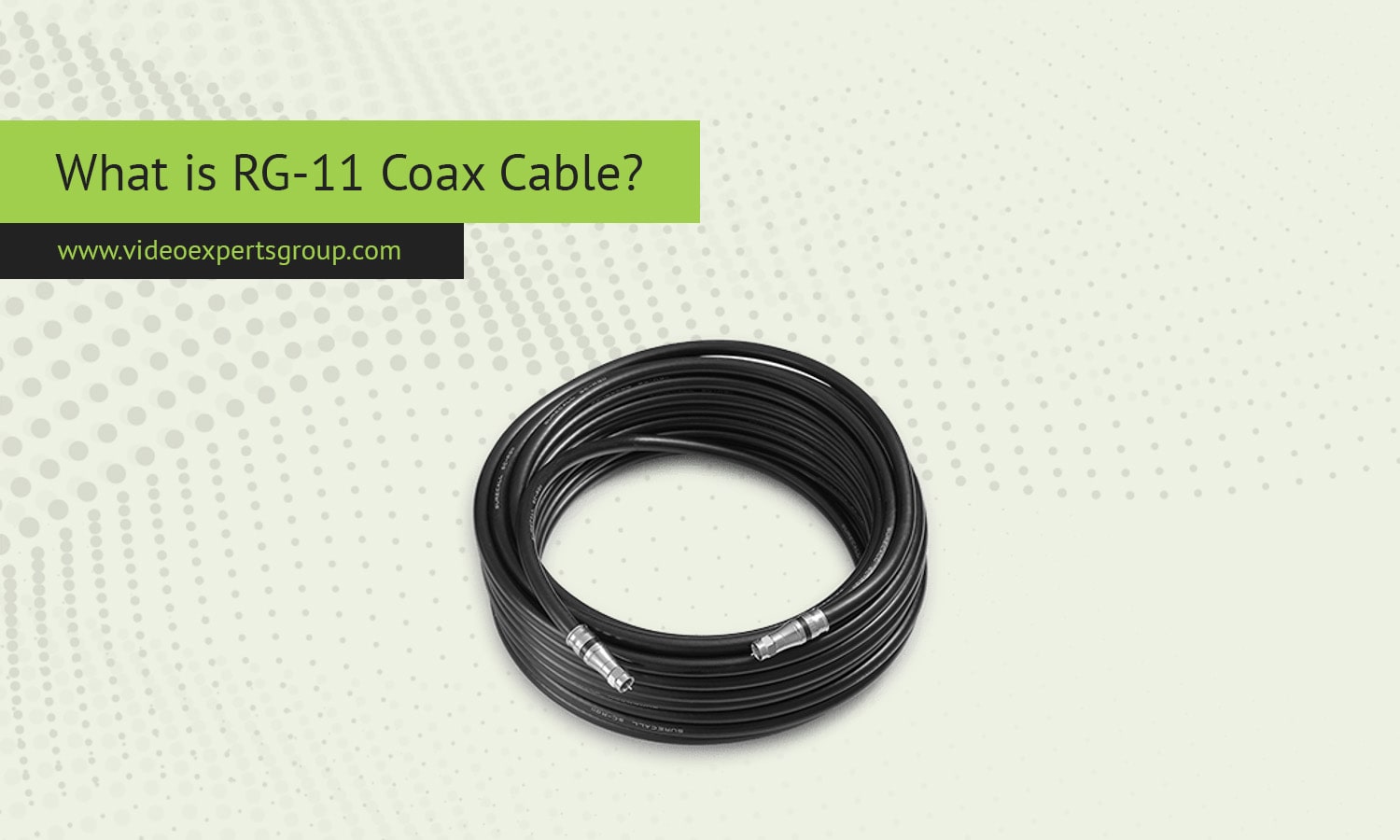RG-11 coaxial cable is a high-performance cable designed for transmitting signals over long distances with minimal signal loss. It is the largest and most robust of the standard coaxial cables, making it an ideal choice for demanding installations. With its low attenuation and excellent shielding, RG11 is commonly used in outdoor and commercial settings where reliability and signal quality are critical.
In this article, we’ll explore the applications of RG-11 cable, its technical specifications, and frequently asked questions.
Common Coaxial Cable Sizes
Coaxial cables come in several sizes, each suited to different applications. The most common types include:
- RG-59
- Smaller diameter and lighter weight.
- Best suited for short-distance, low-frequency applications like older CCTV systems.
- RG-6
- Thicker and better-shielded than RG-59.
- Handles higher frequencies, making it ideal for HDTV, satellite, and broadband internet.
- RG-11
- Largest diameter with the least signal loss.
- Used for long-distance and outdoor installations.
What is RG-11 Cable Used For?
RG-11 coaxial cable is designed for scenarios that demand superior performance over extended distances. Its uses include:
-
Long-Distance Signal Transmission
RG-11 is ideal for installations where signals need to travel far, such as from a central distribution point to individual buildings in a campus or neighborhood. -
Outdoor Installations
With its thicker jacket and better weather resistance, RG-11 is often used for outdoor applications, including connecting satellite dishes and antennas to homes or buildings. -
High-Frequency Applications
The cable’s capacity to handle frequencies up to 3 GHz makes it suitable for HDTV, satellite TV, and internet services. -
Backbone Cabling
RG11 is used as the backbone for connecting multiple RG-6 cables in large systems, such as in cable TV distribution networks. -
Telecommunication Networks
Its low signal loss makes it an excellent choice for linking equipment in telecommunication infrastructure.
Specs
RG-11 coaxial cable is engineered to deliver outstanding performance, especially for long-distance and high-frequency applications. Below are its key specifications:
Construction
- Core Conductor: Typically solid copper or copper-clad steel, which provides better conductivity over extended distances.
- Dielectric Insulator: A thick layer of foam polyethylene ensures minimal signal loss and maintains the cable’s impedance.
- Shielding: Multiple layers of aluminum foil and braided wire provide excellent protection against electromagnetic interference (EMI).
- Outer Jacket: Made of durable materials like PVC or polyethylene for weather resistance and durability.
Technical Specifications
- Impedance: 75 ohms (standard for video and data transmission).
- Frequency Range: Up to 3 GHz, supporting high-definition signals.
- Signal Loss: Significantly lower than RG-6 and RG-59 over long distances.
- Diameter: Approximately 10.3 mm (0.4 inches), making it the thickest of the common coaxial cables.
Environmental Resistance
- Many RG-11 cables are rated for outdoor use, with UV-resistant and weatherproof jackets that make them suitable for direct burial or harsh environments.
FAQ
RG-11 coaxial cable is a powerful solution for installations requiring high-quality signal transmission over long distances. Its robust design, superior shielding, and low signal loss make it indispensable for outdoor and commercial setups. Whether you’re setting up a satellite dish, distributing HDTV signals, or building a telecommunications network, RG11 ensures reliable performance and signal integrity.
















